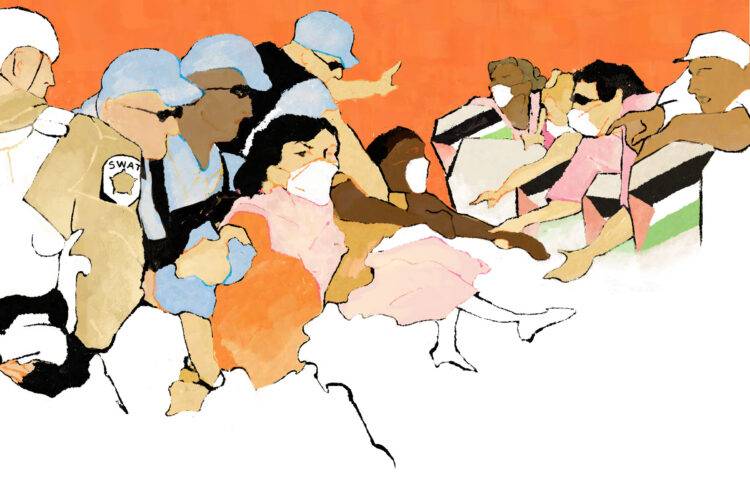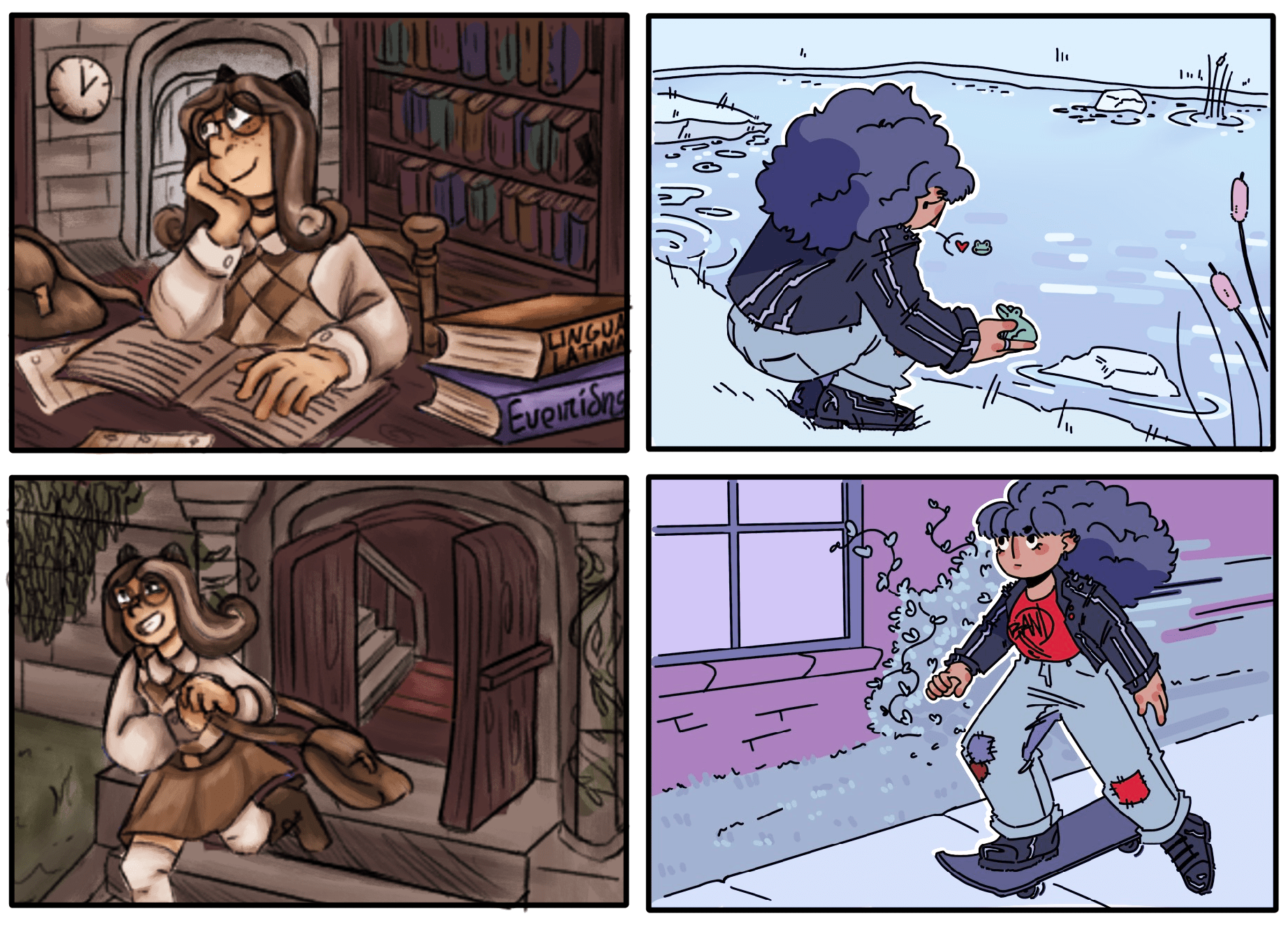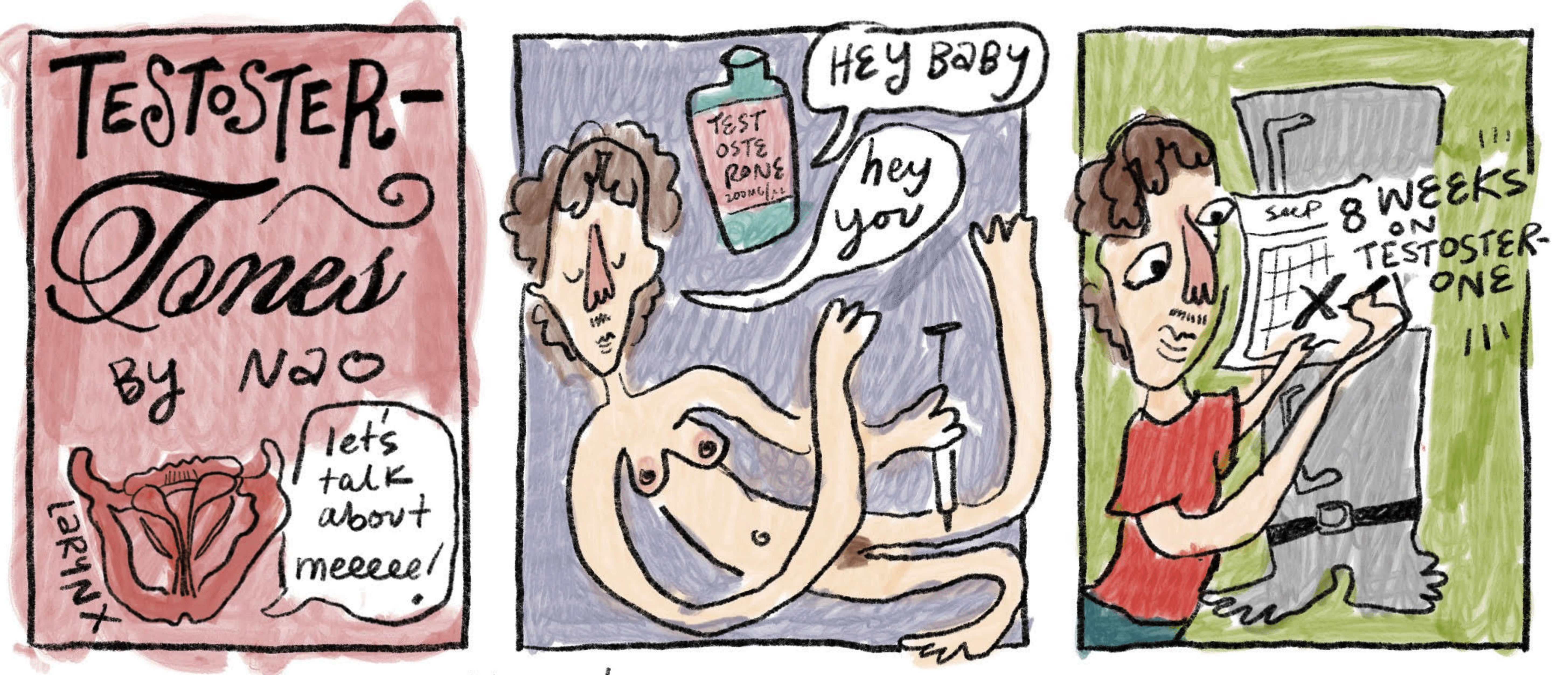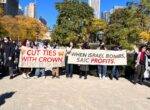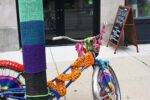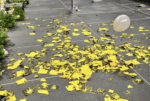This opinion piece was written after more than 15 interviews with School of the Art Institute of Chicago students who were present at the pro-Palestine encampment outside the Art Institute of Chicago in May. Only one source, S, who is anonymous because they fear retribution from SAIC, was willing to go on the record. Although other sources were unwilling to go on the record, the details in the article are from multiple accounts, including the author’s own. The author was present inside the encampment.
Before I start talking about May, I want you to take a minute to understand that it’s been one year since Oct. 7, 2023, and the genocide against Palestinians has not stopped. This is the time to be politically activated, not unmoved. Let every space you occupy be a place for collective liberation.
The morning of May 4, 2024, was a stressful one for the protesters at the Art Institute of Chicago. I should know. I was there. Most of the participants, who gathered in support of Palestine to make demands of the Institute, had not slept for at least three nights, and the previous night’s meeting had gone on till 2 a.m.
The original group of protesters were roughly 60 people, most of whom were students, staff, and community members from the School of the Art Institute of Chicago.
The email sent collectively by the Students for Palestinian Liberation and People’s Art Institute group at approximately 11:30 a.m. to the administration, board of governors, board of trustees, the students, and the professors outlined the goal of the encampment. The group called the encampment the “People’s Art Institute” and “Hind’s Garden.” They had set up an encampment, or what they called a “liberated zone,” within the AIC Gardens.
“As of May 4, over 40,000 Palestinians have been slaughtered in the span of 210 days; our institute and all those affiliated with it were directly complicit. We’re sick of studying in an institute that’s running on blood money,” said S, an SAIC graduate student who asked that their name not be used for fear of retaliation by SAIC.
S continued, “This is not our first time speaking to the school. We’ve been sending constant emails since November, and the school has chosen to ignore them and have dismissed us. One thousand students walking out in April was [Elizabeth] Tenny’s legacy, it’s only going to escalate now.”
The school has been painted with different flyers calling out the genocide in Palestine since early last October, after Hamas, the Palestinian militant organization, broke through the wall between their occupied territories and attacked Israel; 75 years into the illegal occupation of Israel on Palestinian territories. It’s been nearly a year and the administration has barely acknowledged the protests, community gatherings, emails, or walk-outs according to SPL organizers.
Given the national rise of student movements, the tri-school walkout and the encampment at SAIC was not surprising.
S’s recollection of what happened May 4 is parallel to my own, but different from what the school reported. In the articles I’ve read about the encampment, as well as the statement by the school, the focus or trigger point falls on the incident where an AIC security guard was allegedly assaulted and had their keys stolen.
S said that organizers, when they were informed of the stolen keys, tracked down the agitator and retrieved the keys, which they then returned immediately without further agitation or resistance.
According to more than a dozen protesters, as well as what I witnessed myself, the encampment was only established for 30 minutes before the Chicago Police Department had surrounded the AIC garden along the south wall and the first call for arrests was announced.
“There were about 50 of us inside when [CPD] announced that, and some of us couldn’t risk arrest, so we left. When we were escorted out, we passed by approximately 40 cops lined up, ready to jump into the garden,” said S.
According to S, after they went outside, they said the group they were with had several aggressive encounters with CPD officers. The police outnumbered the protesters outside and started kettling them, forcefully pushing them by surrounding them on three sides, onto the sidewalk in front of the West Gate of the AIC garden.
“They were intensely violent,” said S, “Within 15 minutes they had their batons out and were bludgeoning people. I saw two older people, maybe in their 60s, getting trampled by the kettling and couldn’t get back up. I heard a student broke six knuckles when the CPD hit their hands with the baton, and I know four of us were taken to the ER. This was only the first wave of the school-sanctioned police violence.”
S explained that they were one of the students from SAIC who was in the ER for multiple visits in the next few days because of complications that stemmed from the assault. No other encampment or pro-Palestine protest in Chicago witnessed this level of brutality. The University of Chicago and DePaul both had encampments, and both were eventually raided, but neither reported violence.
Several students also reported seeing an armed SWAT team on site, both on the grounds and the roofs of neighboring buildings. By 1 p.m., more than 100 CPD officers were on site, according to S, some surrounded the garden, the others were kettling the 60 to 70 protesters outside.
I’ve been to my fair share of protests, including encampments at Northwestern University, University of Chicago, and DePaul. This was the most violent group of cops I’d come across.
SAIC Provost Martin Berger asked the group of protesters inside to move their encampment from Michigan Avenue to the 280 Building behind the museum. In return, he offered to think about talking with a team of student negotiators about the demands made by the SAIC protesters rejecting the school’s ties to the genocide.
S was outside, so they were not a part of the negotiating team, but members of the organizing group shared how their interaction went with Berger.
While Berger was talking with the group inside, the CPD, who at this time was also in communication with Berger and the AIC representative, took action.
The Instagram user @saic_spl was live throughout, showing a group outside the garden chanting and linking arms. Multiple videos from instagram accounts, including @spl_spl and @thepeoplesartinstitute, showed the CPD pushed through this group — strangling, hitting with batons, yanking people’s hair and scarves, and pushing people into metal fences.
S rejoined the crowd minutes after this first assault because so many of their friends were still caught in the fray.
“It got bloody within a few minutes,” said S, “We were literally just chanting, and the next thing I knew, half of us were on the ground and the CPD was on us with batons. I remember turning to avoid getting hit directly on my face, and I saw a cop strangling someone. I couldn’t even help them because the cop that was on me landed enough hits on my head that I passed out.”
Civilian Office of Police Accountability received three complaints about police brutality following this demonstration which is still being investigated. This is also a good place to mention that there are only a few of us demonstrators who can even afford to lodge complaints given how harshly the state is doubling down on protesters; if pro-Palestine activists were not being discriminated against, I have no doubt we would have had a lot more ongoing investigations.
“It was hard for me to be in classes less than 48 hours after this,” said S.
SAIC released a letter on its website addressing the demonstration where it stated, “we were concerned that the situation had the potential to cause significant harm to the protesters and the public, so we took a number of steps to de-escalate the conflict and mitigate the safety risk.”
At most, five student protesters had direct communication with the provost during the encampment, so the sentiment that negotiations were a “shit-show” is a shared one among all the SAIC protesters. According to the organizers, the school has made no efforts to meet with student organizers or those affected by police brutality.
“The provost was informed that we were non-hierarchical and would need some time to consider, and vote on what to do. They tried to rush us and when we pushed back to ask for more time, he took advantage of the consensus-based decision-making,” said S.
The protesters said that they were double-crossed by the administration. While AIC and SAIC reported that the group rejected the proposal to move to the 280 building by the next morning, the protesters said that they asked for the deadline to be extended from 6 a.m. to 10 a.m. This was validated by a statement published by the PAI after the encampment.
While this was going on, S was in communication with the group of protesters inside by phone as well as through the gate separating the protesters inside to the ones outside.
“They didn’t indicate that they would pull the deal based on our ask for an extension. We requested the change at 3:30 p.m., and they let us think that they were considering it but instead, the whole time they (AIC & Berger) were just signing an order to the CPD to raid us,” said S.
Within minutes, the group of protesters outside were surrounded again. At this point, there were hundreds of people who had taken up the median in the middle of Michigan Avenue, and between 50 and 60 more on the sidewalk in front of the gate. SAIC students and community members had responded to the SPL live showing brutalization, and the call to support, that had gone viral in the hours before.
The activists inside the garden had 15 minutes to collect themselves before the raid. There was no communication with the people outside at this point, according to S.
“We were outside, and they were inside and all we could do was try to hold the line in front of the gate,” S said.
It was a frightening moment for all of us there. So many of our friends were still inside and had collected together in a huddle in the center of the garden, shields up. I remember we had been pushed to the side by the CPD, and so we were clinging to the fence to get a better view.
“The way they rallied inside kept us going,” said S, “I never thought I’d see something like that. People as young as 16 and 17, and as old as their late 60s standing in rings, with shields in their hands for Palestine. And right in front of me were over 150 fascist cops armed with batons and riot gear. I knew which side I was on.”
The pictures that have come out of the AIC garden raid speak for themselves. The CPD, by request from the AIC, arrested 68 protesters after three warnings to clear the area, two of whom were taken to the ER immediately, according to news reports.
In the past few weeks, this incident has led to the dual understanding that collective solidarity is needed for further escalatory actions and that the school truly does not care for the physical or mental safety of its students, faculty, or community members. As S said, too many of us are more clear than ever which side we are on.
On July 2, all charges were dropped, the students faced no disciplinary action, and business seemingly went on as usual. Hind’s Garden only stood for five hours, but it served to show exactly how prepared the community was and still is to escalate in their activism for Palestine.

